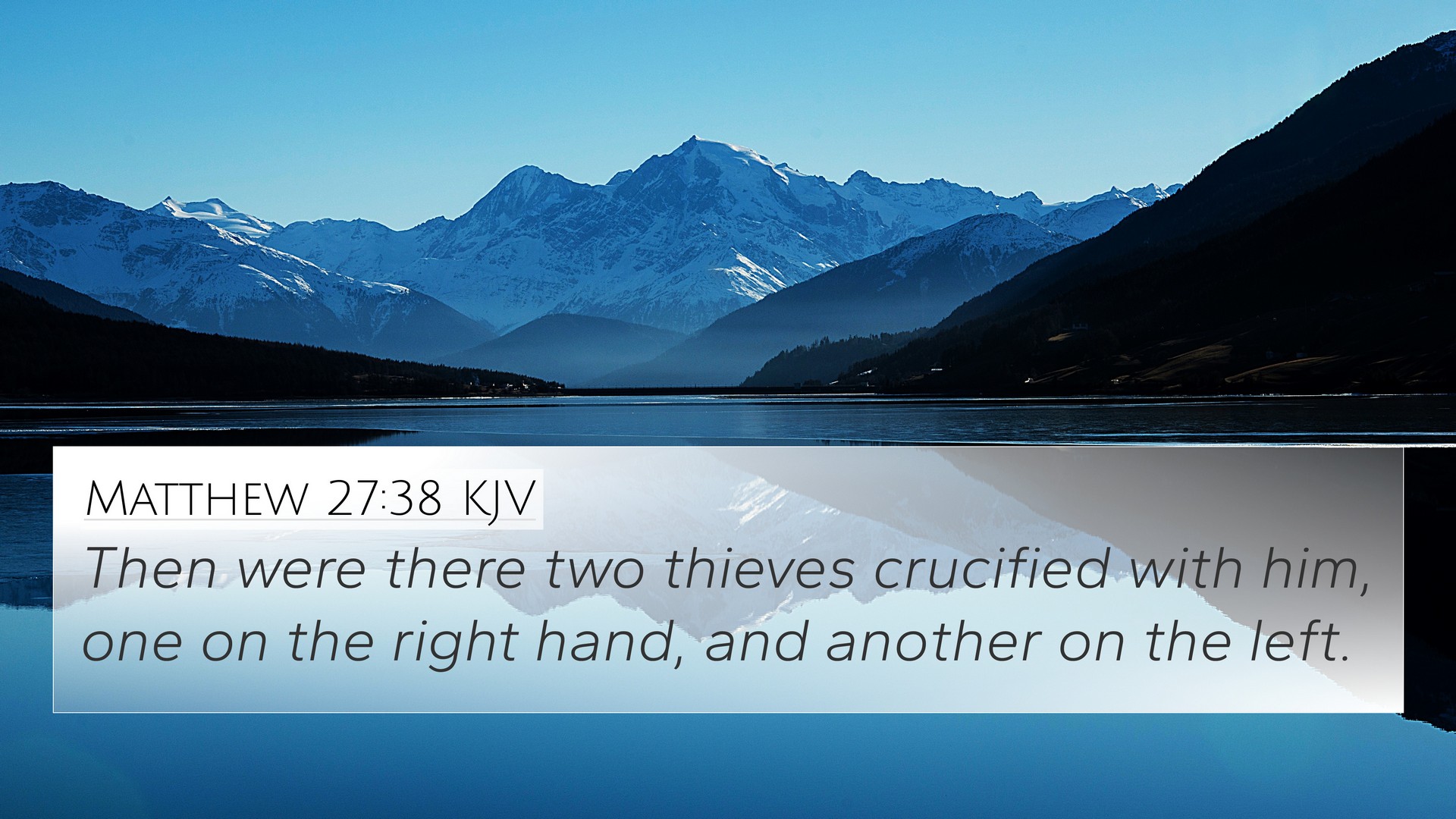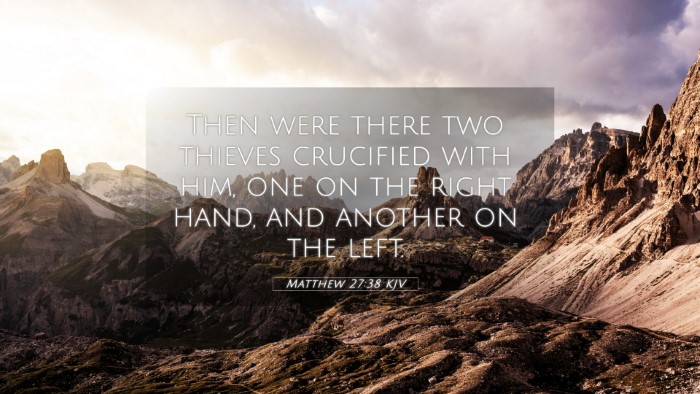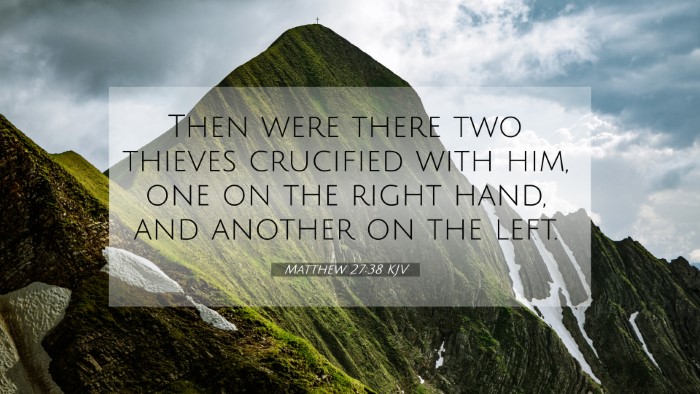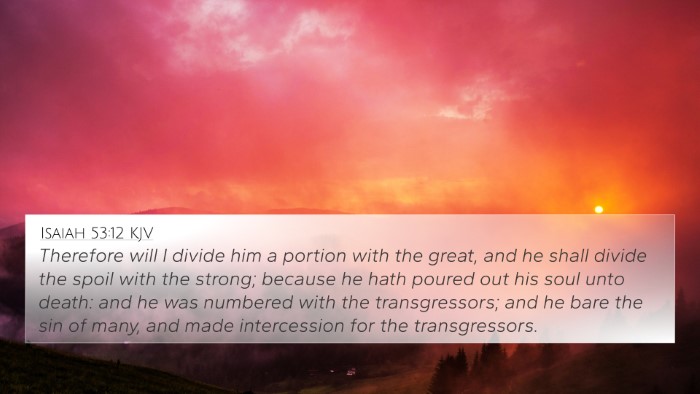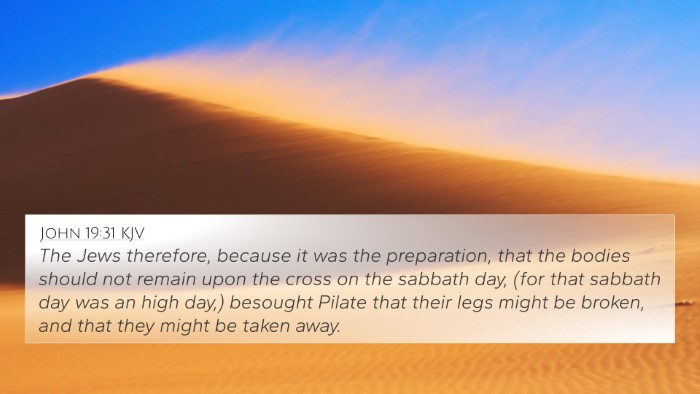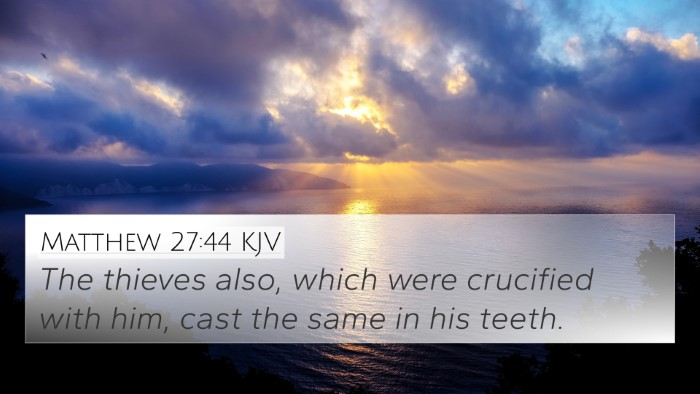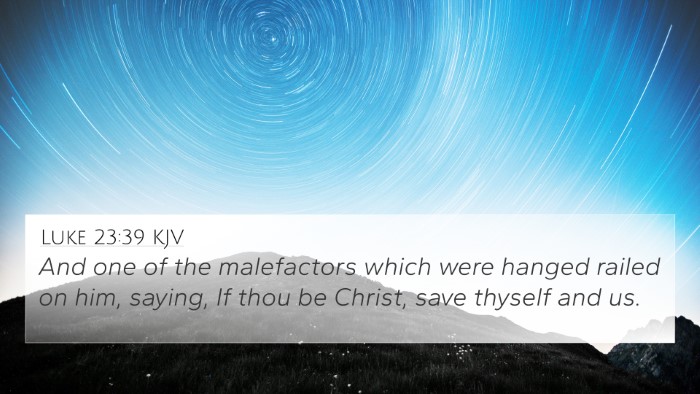Bible Verse Meaning: Matthew 27:38
Verse Text: "Then were there two thieves crucified with him, one on the right hand, and another on the left."
Overview of the Verse
This verse encapsulates a significant moment in the crucifixion narrative of Jesus Christ. The presence of the two thieves—one on the right hand and one on the left—symbolizes the contrasting reactions to Jesus during His final hours. The delineation of locations reflects deeper theological truths about judgment, salvation, and human response.
Commentary Insights
- Matthew Henry: Henry interprets the thieves’ crucifixion alongside Jesus as symbolic of humanity’s dual potential towards sin and redemption. He emphasizes that while both thieves were guilty, their ultimate destinies revealed the grace available through Christ.
- Albert Barnes: Barnes explores the fulfillment of prophecy, connecting this event to Isaiah 53:12, which speaks of Christ being numbered with the transgressors. He highlights that this scene illustrates the shame of crucifixion and the lack of worldly honor given to Jesus in His final hours.
- Adam Clarke: Clarke notes the historical context of crucifixion and the nature of the crimes committed by the thieves, pointing out that their presence reinforces the idea of Christ bearing the sin of the world. He mentions the dichotomy between the two thieves as a means to emphasize the choices of faith versus rejection.
Thematic Connections and Cross-References
This verse finds resonance throughout Scripture, reflecting key themes such as sin, redemption, and judgment. Understanding it requires exploring various connections between Bible verses:
- Isaiah 53:12: "He bore the sin of many, and made intercession for the transgressors." This prophetic verse foreshadows the very event depicted in Matthew 27:38.
- Luke 23:39-43: The narrative of the penitent thief who recognized Jesus’ kingship and received assurance of salvation connects deeply to the themes of mercy and repentance.
- John 19:18: This passage reiterates the physical act of crucifixion, further solidifying the imagery of Jesus between the two criminals.
- Philippians 2:7-8: This scripture reflects on Jesus’ humility and obedience unto death, emphasizing His role as Savior amidst great shame.
- Romans 5:8: “But God commendeth his love toward us, in that, while we were yet sinners, Christ died for us.” This reinforces the concept of grace offered through His sacrifice.
- 2 Corinthians 5:21: This verse explains how Christ, who knew no sin, was made sin for us—foreshadowed by the thieves’ crucifixion.
- Hebrews 13:12: “Wherefore Jesus also, that he might sanctify the people with his own blood, suffered without the gate,” illustrating the necessity of His suffering.
- Matthew 20:28: This verse notes that Jesus came to serve and give His life as a ransom for many, thus depicting the broader purpose of His sacrifice.
- Revelation 7:14: The imagery of washed robes and white signifies the outcome of the redemptive work of Christ, seamlessly tying to the crucifixion narrative.
- Galatians 3:13: "Christ hath redeemed us from the curse of the law, being made a curse for us." This statement encapsulates the theological implications of Christ’s crucifixion alongside sinners.
Understanding the Significance
The crucifixion of Jesus flanked by two thieves serves not only as a historical account but also as a rich theological metaphor. It highlights:
- The universal condition of sin, depicted by the thieves.
- The manifestation of grace amidst judgment, offering hope for redemption.
- The fulfillment of messianic prophecy, establishing Jesus’ rightful place in salvation history.
- The dual responses of humanity—condemnation versus acceptance—seen through the disposition of the thieves.
Conclusion
Matthew 27:38 provides an important moment in the narrative of Jesus' crucifixion, offering profound insights into the nature of sin, redemption, and the grace afforded to humanity. The connections made through this verse establish a comprehensive understanding of the core themes communicated through both the Old and New Testaments.
